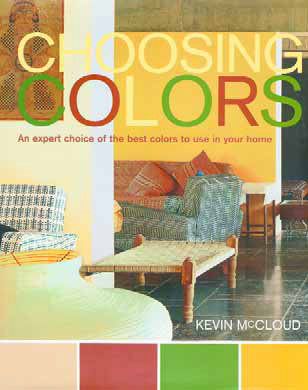Colorful Potential

One of the characteristics I’ve noticed among watershape designers is a tendency to stick with what works. Nowhere is this more pronounced than with the often-tricky issue of working with color: It’s almost as if there’s an unwritten rule that a very small palette of very familiar colors are all that is appropriate – especially for pools and spas!
I believe that this lack of color creativity extends to some degree from familiarity with certain key products and their standard colors, be they tile, plaster or exposed-aggregate materials. To a much greater extent, however, I think the cause is a lack of basic education in color theory.
I speak from experience on this subject, because for all of my own efforts to grow as a designer, one area that has long eluded me is the vast world of possibilities that reside in the creative use of color. To help fill the gap, I recently turned to an introductory text about color theory, history and style entitled Choosing Colors : An Expert Choice of the Best Colors to Use in Your Home (Watson-Guptill Publications, 2003).
Written by Kevin McCloud, a man renowned in the United Kingdom as an expert on architectural styles and residential interior design, this 190-page, beautifully illustrated text offers a wonderfully informative look at the subject of color selection. Although it was written with residential interiors in mind, the ideas at play in the book are easily translated to our work in designing exterior spaces and watershapes of all kinds.
He approaches his subject by breaking it into six basic categories, starting with what he calls the “pure” colors, meaning the primary colors plus green. He also covers in great depth the colors closely associated with significant historical periods, using the examples of Middle Eastern tile, Greek pottery and Roman mosaics on his way to consideration of colors associated with modern aesthetic movements such as Art Deco. Moving along briskly, he spends time with natural palettes (mostly subtle earth tones), simple color palettes, complex palettes and, finally, vibrant colors.
In all, McCloud covers 64 color palettes, offering a variety of examples and insights having to do with why the groupings of colors work together. In just one pass through the book, I learned more about color theory than I did in any and all of my art classes back in school.
McCloud makes a big point in the text that the book itself was printed using a “hexachrome” or six-color printing process, a fact that he uses to make the point that modern technology is making a wider range of colors available to designers in a variety of fields. He also makes the key point that color, and particularly the creative use of color, can be extremely evocative on an emotional level – and is indeed similar to the sense of smell in its ability to stir memories.
Perhaps most helpful of all, the text concludes with a fantastic listing of other books and resources available to anyone interested in advancing his or her understanding of color theory, history and selection. (I’ve already ordered a couple of these for my own collection.)
As is the case with most basic texts on complex subjects, you will not come away from this book as an expert by any means. But in this book in particular, you get a great start. For my part, I found McCloud’s treatment of the subject to be both practical and inspirational, so much so that from now on I know that I’ll be looking beyond the familiar sets of color choices to zero in more fully on ways I can give my clients the very best in their watershapes and exterior spaces.
Mike Farley is a landscape designer with more than 20 years of experience and is currently a designer/project manager for Claffey Pools in Southlake, Texas. A graduate of Genesis 3’s Level I Design School, he holds a degree in landscape architecture from Texas Tech University and has worked as a watershaper in both California and Texas.











